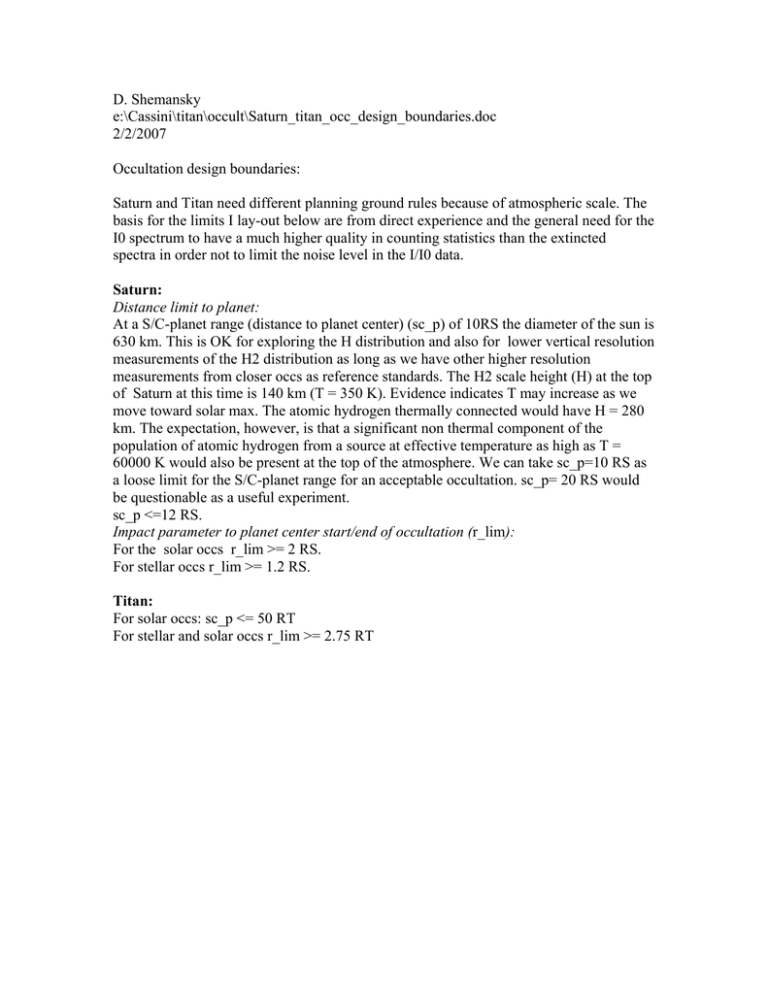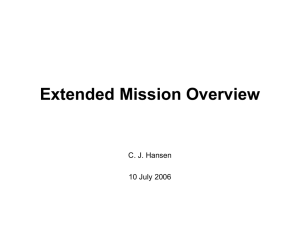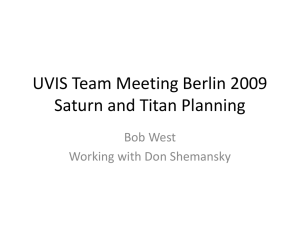D. Shemansky e:\Cassini\titan\occult\Saturn_titan_occ_design_boundaries.doc 2/2/2007
advertisement

D. Shemansky e:\Cassini\titan\occult\Saturn_titan_occ_design_boundaries.doc 2/2/2007 Occultation design boundaries: Saturn and Titan need different planning ground rules because of atmospheric scale. The basis for the limits I lay-out below are from direct experience and the general need for the I0 spectrum to have a much higher quality in counting statistics than the extincted spectra in order not to limit the noise level in the I/I0 data. Saturn: Distance limit to planet: At a S/C-planet range (distance to planet center) (sc_p) of 10RS the diameter of the sun is 630 km. This is OK for exploring the H distribution and also for lower vertical resolution measurements of the H2 distribution as long as we have other higher resolution measurements from closer occs as reference standards. The H2 scale height (H) at the top of Saturn at this time is 140 km (T = 350 K). Evidence indicates T may increase as we move toward solar max. The atomic hydrogen thermally connected would have H = 280 km. The expectation, however, is that a significant non thermal component of the population of atomic hydrogen from a source at effective temperature as high as T = 60000 K would also be present at the top of the atmosphere. We can take sc_p=10 RS as a loose limit for the S/C-planet range for an acceptable occultation. sc_p= 20 RS would be questionable as a useful experiment. sc_p <=12 RS. Impact parameter to planet center start/end of occultation (r_lim): For the solar occs r_lim >= 2 RS. For stellar occs r_lim >= 1.2 RS. Titan: For solar occs: sc_p <= 50 RT For stellar and solar occs r_lim >= 2.75 RT

